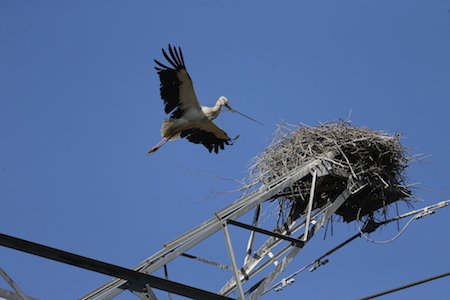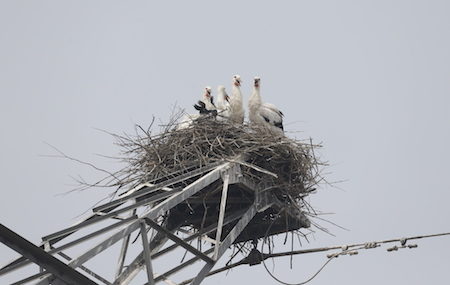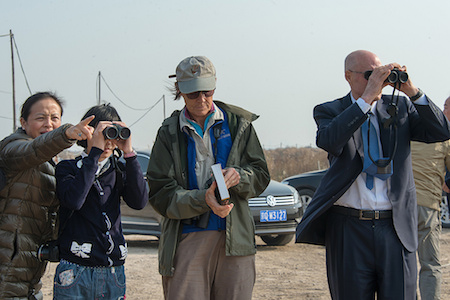
Some 800 highly endangered Oriental White Storks were spotted recently at the Beidagang Wetland Nature Reserve in Tianjin – a major habitat for these migratory birds along their route south for the winter. The Beidagang wetland is threatened by increased industrial, aquaculture and urban development, as well as occasional illegal poaching. The Paulson Institute Conservation Program is working with the local government and conservation groups to contain the loss of biodiversity and degradation of the wetland ecosystem in Beidagang. The plan: to build the area into a model for coastal wetland conservation in China.

There were a few signs of hope last summer, when technicians spotted Oriental White Storks building a nest in the wetland.

Four chicks hatched—the first record of the storks’ breeding in Tianjin. When technicians inadvertently scared off the parents and two mature chicks, members of the Tianjin Binhai New Area Wetland Conservation Society (TBWCS) saved the remaining two chicks. They have been preparing them for their release this fall.

In November 2013, Paulson Institute Chairman Hank Paulson and his wife Wendy (seen here with PI Chief Conservation Officer Rose Niu, far left), both avid birdwatchers, visited the wetland to see the challenges firsthand. The visit opened the door to an unusual partnership between the TBWCS, a new NGO, and the local government, who have been working on water level management in Beidagang to ensure food sources for water birds. With the continued efforts of the local government, NGOs, and the Institute, the birds might still have a chance.




